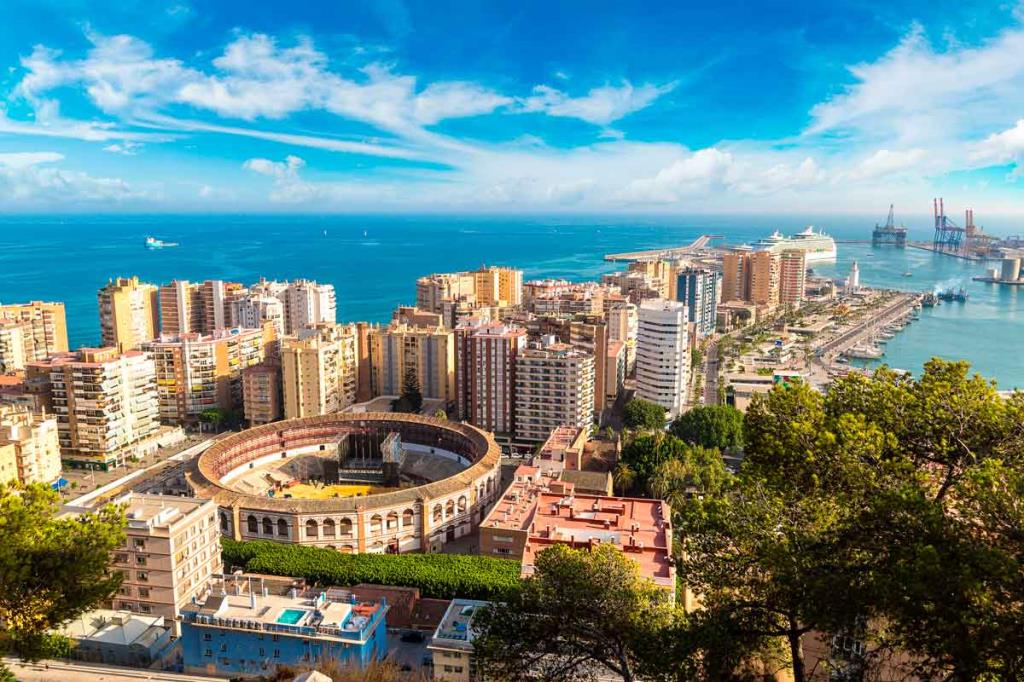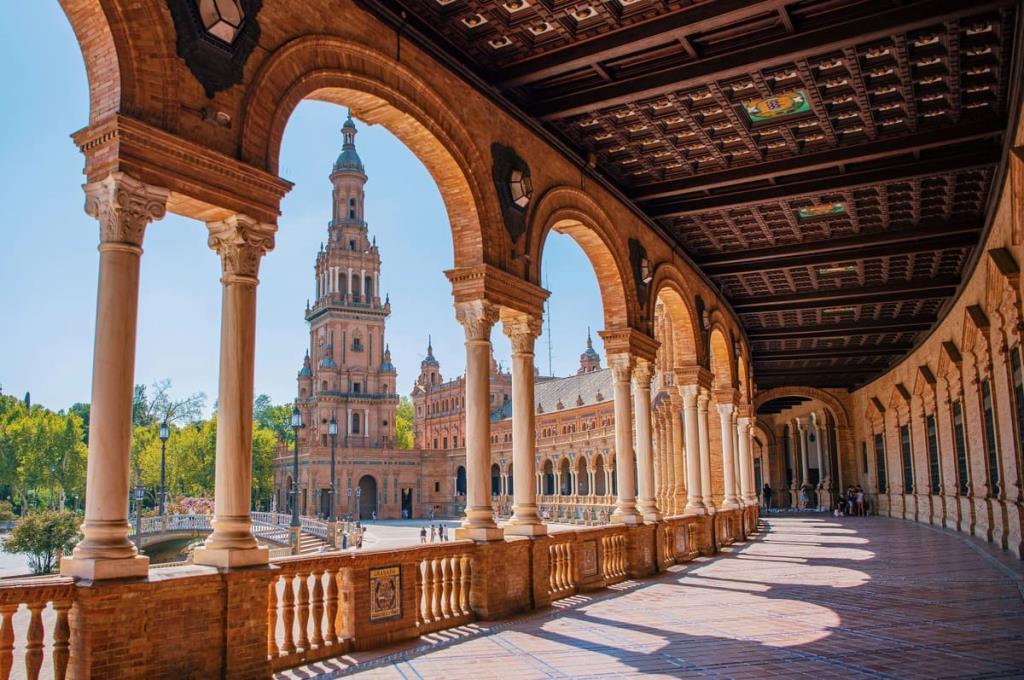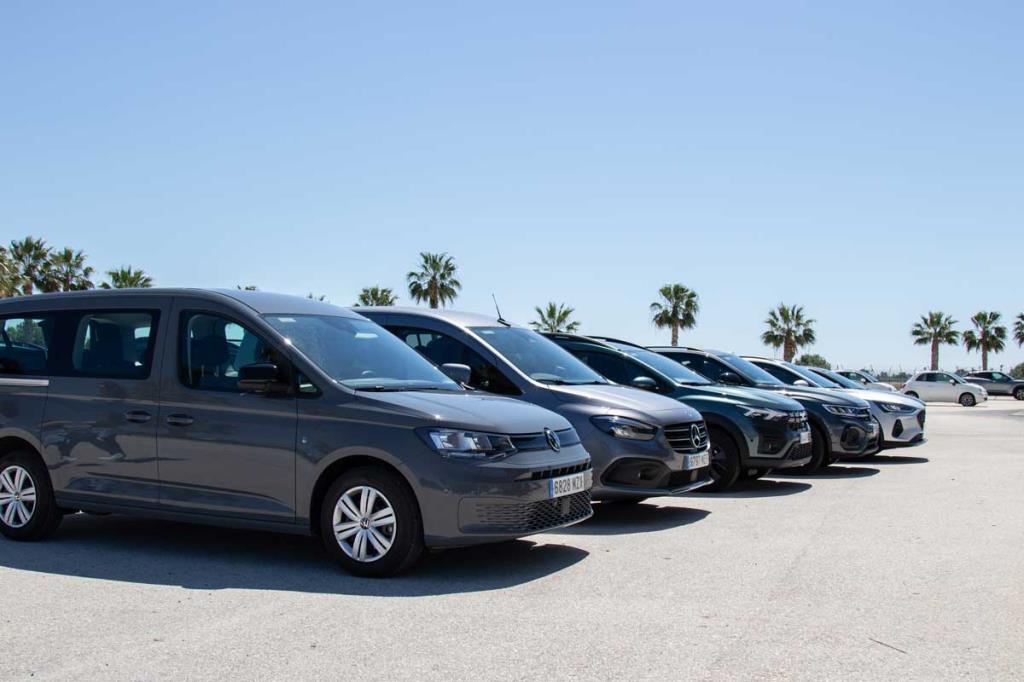
What to see in Málaga in three days: unmissable things to visit in the capital of the Costa del Sol

Wiber Rent A Car
Eternally eclipsed by the tourism that revolves around the sun and the beach, the city of Málaga is one of those places that does not leave anyone indifferent and has the capacity to surprise, and, above all, to win the heart of its visitors. We are certain that if you decide to come to the capital of the Costa del Sol on your next holiday (or on a weekend getaway!) you will want to come back.
Because the thing is that this Andalusian city can boast having great historical roots, a considerable artistic and cultural offer and great cuisine. Combined with warm people and a fantastic climate, these things make Málaga an up-and-coming holiday destination and one of the most special cities in all of Spain. Because of this, here at Wiber we would like to suggest an authentic #WiberExperience to discover all of its charms and we have drawn up a list of what to see in Málaga in three days.
Fortunately, the capital of the Costa del Sol has got a lot to offer, but it can all be done in two or three days if you make the most of your time. In order for you to not miss out on even a bit of Málaga, we have compiled the unmissables of the city.
Take notes and let’s get started!
Visiting Málaga in three days: what to see and do
Before preparing any trip, most people make sure that they know what to see and do when they get to their destination. The capital of the Costa del Sol has developed a lot in the last few years and it is one of the most promising cities in the whole of Europe, so it is quite easy to get lost among so many things and to over look something that must be done in the city. To avoid this happening to you, here is a complete guide of what to see in Málaga in three days, step by step. Do you want to come on this journey with us?
Day 1: The hear of the historic centre of Málaga
We begin our three day tour of Málaga on the city’s main street: the calle Larios, the fifth avenue in Málaga and one of the main roads that connects the historic centre to the harbour. Taking a stroll along this road, opened in 1891, is one of the things you must do in Málaga because of the atmosphere (during any time of the year) which is a perfect example of 100% Andalusian essence.
Calle Larios in Málaga.
Take this opportunity and try a typical breakfast from Málaga in any of the coffee shops that are in this area. Ask for a good coffee with churros or a ‘pitufo’ (smurf) with olive oil. Remember though, that in Málaga you need to know how to ask for a coffee, because depending on the quantity of coffee, they are all known by different names: mitad, sombra, largo (half, shadow, long)…there are up to nine different varieties you can order!
Walking along calle Larios, we will eventually make it to plaza de la Constitución, where newspaper front pages from the day that the Spanish Constitution was approved are to be seen on the ground, and then take the narrow calle Santa María that ends up near the Catedral de la Encarnación (the Cathedral), also known as ‘La Manquita’ (the little one-armed one) because it has only got one turret due to its construction being stopped in 1782.
Undoubtedly one of the must do’s in Málaga is to get lost among its streets in the historic centre like the calle Granada or the calle Alcazabilla, two of the streets with most character in the whole city. The first stands out because itis very narrow and it has some establishments that are part of Málaga’s history such as the Bodega El Pimpi or the Iglesia de Santiago church, one of the oldest in the city, where Picasso wasbaptised. In the second, we can walk along 3,000 years of history laid out in barely 250 metres; the Roman theatre, the remains of the phoenician wall, the Picasso Museum, the Palacio de Aduana or the Alcazaba.
Palacio de La Alcazaba in Málaga.
It is precisely this last place that is our next stop. La Alcazaba, the Castillo de Gibralfaro castle and the Roman theatre are the city’s most important archeological sites. The first was built between the 11th and the 15th centuries and was the fortress-palace of the Muslim rulers and it is connected to the Castillo de Gibralfaro castle (we will visit this later). A must see today is the Roman Theatre, which sits at the feet of the Alcazaba and was built in the 1st century B.C. After being restored, it continues to host scenic plays.
To end the visit, we will take calle Alcazabilla to go to Plaza de la Merced, where we will begin the Picasso tour of Málaga, starting at the Picasso Foundation. Casa Natal museum, the place where the renowned artist was born and lived until 1884. In the nearby calle de San Agustín is the Palacio de Buenavista, the seat of the Málaga Picasso museum. This square, which was recently restored, has a very young and bohemian atmosphere, a statue of Picasso where you can take a good selfie, and is the perfect place to take a break with a good beer and to enjoy some of the delicious cuisine from Málaga.
Bronze statue of Pablo Picasso in Plaza de la Merced.
Continuing on our tour, we now go to the Castillo de Gibralfaro, this time in public transport. This fortress was erected by Málaga’s Muslim rulers on top of the Phoenician ruins that were already there. Visiting this castle is a must when in Málaga due to the stunning views over the city and its bay. On the way back, we will stop at La Malagueta bullring, where bullfighting lovers can visit the museum and marvel at the matador’s outfits, the capes and the historic bullfighting posters.
The tour continues on to the Municipal Heritage museum of Málaga and to the Paseo de la Farola that ends at the landmark that gives it its name: La Farola (lamppost), from 1817, the only lighthouse in Spain with a feminine name and the city’s most famous symbol. From there, there are some spectacular views of the Port of Málaga and the centre of the city, to which we will go back along Muelle 1 (dock 1), one of the most trendy areas in the capital of the Costa del Sol, where Málaga’s nightlife can be enjoyed.
La Farola in Málaga.
Day 2: A trip to the most traditional and cultural Málaga
Our second day of the Málaga in three days tour revolves around the more traditional and,because of this, cultural, part of the city and its more interesting (and lesswell known) museums. There is something for everyone, we promise! The Museum of Flamenco Art, the Peña Juan Breva, the Interactive Music Museum, the Museum of Glass and Crystal, the Museum of the Semana Santa of Málaga, the Wine Museum of Málaga and/or the Museum of Popular Arts and Customs.
During day two, we can also visit the Cervantes Theatre, dating back to 1870 and the venue of the popular Málaga Spanish Cinema Festival. From here, we will go along the call Dos Aceras and visit the church of San Felipe Neri, which is built in a stunning baroque style. Towards lunch time, we are going to be getting closer to the sea, but not before stopping to visit the Mercado de Atarazanas market, because to get to know a city you should visit its market.
And now it’s time to eat! And we are going to the Paseo Marítimo de Pedregalejo, where we will be able to enjoy the most typical cuisine from Málaga in its small street food bars: traditional boquerones, espetos, conchas finas, pescaíto frito(anchovies, skewers, thin shells, fried fish)…Without a doubt a delicacy and a delight for the five senses!
"Espetos" (skewers) malagueños, a typical dish of Málaga.
Back in the city centre, we are going to go back to the plaza de la Constitución to go to the Carmen Thyssen Museum and after this it will be time to get lost in the winding streets and alleys of the historic centre again and to discover its beautiful corners such as, for example, the pasaje de Chinitas, which we can access through the stone arch located at the edge of the square. We will also visit two smaller squares, the plaza del Carbón and the plaza del Siglo, that are two unique places that should be visited when in Málaga.
Day 3: Málaga from a different perspective
We begin our third day of our three day tour of Málaga at the Parque de la Alameda park, or Málaga park, a subtropical botanical garden that is one of the most pleasant places to go for a stroll in in the centre of the city. It is a place where you can enjoy some refreshing shade during the hot and busy summer and is perfect to get away from the hustle and bustle of Málaga as it is one of the biggest green spaces in the centre.
Parque de la Alameda or Málaga Park.
Once we have enjoyed this wonderful garden for a bit, we are going to continue our tour to visit CAC Málaga – Centro de Arte Contemporáneo de Málaga (Málaga Contemporary Art Centre), an internationally renowned centre of contemporary art thanks to the importance ofits permanent collection. And to finish off with the places that must be visited in the city, we will go to the Centre Pompidou Málaga which stands out both due to its art collection and the building itself, which is a cube made of glass in vivid colours.
Centre Pompidou in Málaga.
So there we have it, we’ve ticked all the boxes and visited the unmissable things in Málaga! All the same, here at Wiber we recommend that if you have a little bit more time, you make the most of it and go visit (and walk) the Caminito del Rey, one of the most famous walking paths in the whole of Spain that should be walked at least once in every life time. Besides this, you can also combine the Málaga in three days tour with New Year’s eve and celebrate the beginning of 2019 in style in the capital of the Costa del Sol.
Our tour of Málaga in three days has reached its end, but we leave with a backpack full of experiences, unique memories and unforgettable sensations. Ah! And with a full stomach. You can also explore the villages around Málaga with our road trip around the pescaito frito region.

 EN
EN  Español
Español 
